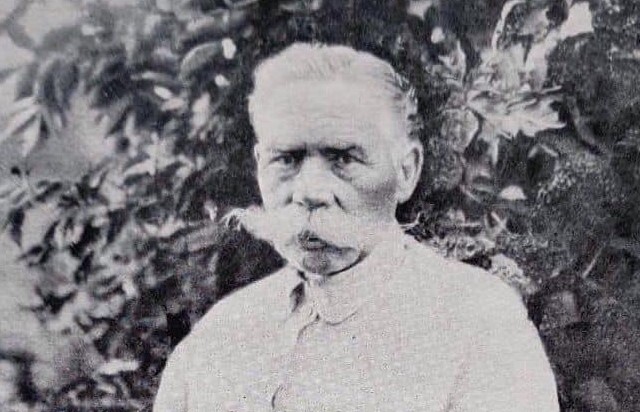

An outstanding Ukrainian painter, architect, ethnographer, art historian, and teacher, Opanas Slastion was born on January 2 (14), 1855 in Berdiansk, in the then Tavriia province. His father was an icon painter and restorer. It was from him that young Opanas learned the first basics of drawing.
In 1874, Slastion became a free student at the Academy of Arts. His teachers were Ivan Kramskyi and Pavlo Chystiakov. He was the head of the club of Ukrainian artists in St. Petersburg. His artistic, ethnographic, pedagogical, and educational activities are inextricably linked to Poltava region. During summer vacations, together with Porfirii Martynovych (illustrator of Ivan Kotliarevskyi's "Aeneid" (1873-1874), they traveled to Ukraine, walked across the Left Bank of Ukraine, collecting materials on Ukrainian antiquity - recording folk songs and dumas, sketching portraits of performers, landscapes, characteristic types of peasants, historical monuments, and examples of folk architecture. Based on these sketches, the artist created sheets for the albums “Ukrainian and Zaporizhzhia Antiquities” and “Ancient Ukrainian Architecture.” Unfortunately, most of the lithographs were lost during the spring flood of 1895.
In 1900, he moved from St. Petersburg to Myrhorod, Poltava province, where he taught drawing at the Mykola Gogol Art and Industrial School for 28 years. He was friends and corresponded with Dmytro Yavornytskyi. He was particularly interested in kobzarism. He recorded kobzars' songs and painted their portraits. He was so fascinated by this area of folk art that he learned to play the instrument himself and was an excellent performer of Ukrainian dumas and songs. Slastion actively collaborated with Klyment Kvitka and Lesia Ukrainka in the study of kobzarism.
Opanas Slastion was one of the founders of the Ukrainian architectural style. He warmly supported Vasyl Krychevskyi in the realization of his idea to build the Poltava Provincial Zemstvo building in the Ukrainian style (now the building of the Poltava Museum of Local Lore named after V. Krychevskyi) . This idea had to be fought for, as it had many opponents. Nevertheless, Krychevsky's project won the construction commission by 6 votes. In a letter to Borys Hrinchenko on June 26, 1903, Opanas Slastion wrote: “...the fact that Poltava will have its own Ukrainian Zemstvo building will never be forgotten, but will spread further and further...”
During the Civil War, he was responsible for the preservation and protection of cultural property in the Myrhorod region. He was the founder and first director of the Scientific Art and Industrial Museum. The art critic was one of the organizers of the first All-Ukrainian exhibition of artists held in Poltava in 1903 on the occasion of the opening of the monument to Ivan Kotliarevskyi, and created a wonderful lyrical portrait of the writer, published in the collection “In Eternal Memory of Ivan Kotliarevskyi,” published in Kyiv in 1904 by the publishing house “Vik”. He was an ardent supporter of the creation of a museum of the great Poltava resident, repeatedly raising this topic in the "Kyivska Staryna" magazine.
He was an excellent writer, and his art criticism and journalistic research reveals various trends in Ukrainian folk art. Slastion's works are kept in the National Art Museum of Ukraine, Kharkiv Art Museum, Poltava Art Museum (Art Gallery) named after M. Yaroshenko, and others.
Opanas Slastion died on September 24, 1933. He was buried in Myrhorod at the Trinity Cemetery.
In 2016, Zhovtnevyi lane in Poltava was renamed into Opanas Slastion Lane.
To the news list